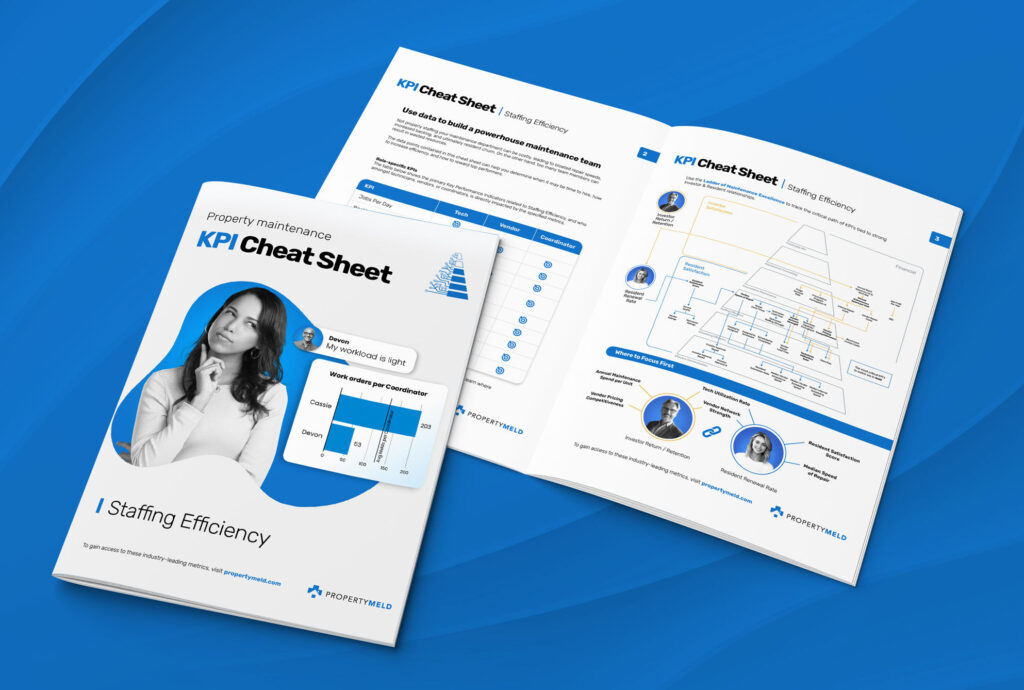Property Meld teamed up with the National Association of Residential Property Managers (NARPM) to discuss leveraging KPIs for your maintenance team to improve efficiency and build a powerhouse staff.
We were joined by Deb Newell, a seasoned property management consultant, and Justin Mann, Co-founder and managing partner of Stonelink Property Management.
How the Rental Market has Changed
Housing providers used to have all the authority. They could charge what they wanted, and it was easy to fill rental units. Now, we are starting to see units sitting vacant for longer, and property management companies are laser-focused on resident satisfaction and renewals.
This change in the market has made the staffing efficiency of your maintenance team even more crucial. Your residents are your assets, meaning you need to retain that asset. The maintenance experience heavily influences resident churn. So, executing your maintenance process with excellence is your solution to lowering churn and keeping renters in their units.
A focus on maintenance is critical for providing a positive resident experience and lowering churn, which ultimately improves profit for investors.
As Justin Mann said, “You want your owner’s statements to be as boring as possible.” This means you are being steady and predictable, which leads to your business and clients’ success.
How Does Maintenance Performance Contribute to Overall Operational Efficiency?
The industry is shifting and placing a greater focus on maintenance. Maintenance efficiency is critical for resident satisfaction and investor retention and for keeping property management companies safe from potential litigation.
Litigations surrounding negligence have increased, and property management companies can protect themselves from this by focusing on providing preventative maintenance and ensuring repairs are completed as efficiently as possible.
Leveraging KPIS for your Maintenance Team
Data allows property management companies to drill down into metrics to analyze performance. Justin Mann at Stonelink said they started looking at their coordinator metrics. “We’re looking at bandwidth, throughput, load balancing, and how many work orders they handle in a day, week, or quarter,” said Mann.
This has allowed them to understand their resident satisfaction per coordinator. How much work can they handle, and what is their backlog?
“The more data we get, it starts forcing us to get more specific about how we classify our work orders,” Mann mentioned.
Classifying work orders by category allows you to drill down into data because not all work orders are the same, meaning they require different service levels.
Deb Newell mentioned she likes to track maintenance spend per unit because it allows you to retain investors. Your clients need to know how much they should expect to spend on maintenance in a year.
“I can guarantee if property managers focused on maintenance first, you’d have an amazing business. The rest of it will work out,” said Newell.
Establishing a strong culture for your maintenance staff is crucial to improving resident satisfaction. They are your brand ambassadors who interact with your residents most often.
Making them feel included and motivated is a great way to ensure they provide the level of service you expect.
“However well they perform is how that resident perceives your company. So you want to make sure they are motivated to do well because they can lower or elevate your brand in the eyes of your residents,” said Mann.
You can do this by tracking metrics to highlight your top performers. This not only helps you retain vital employees but also increases resident satisfaction.

Download our KPI cheat sheet to download the metrics discussed in this webinar.





